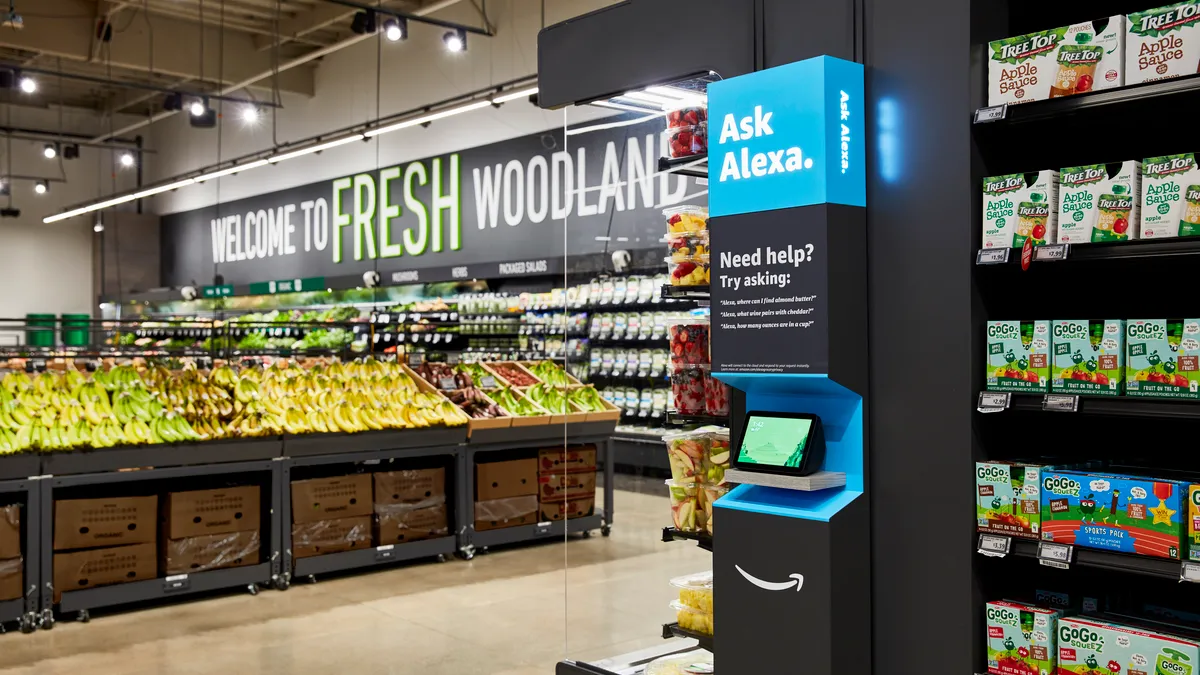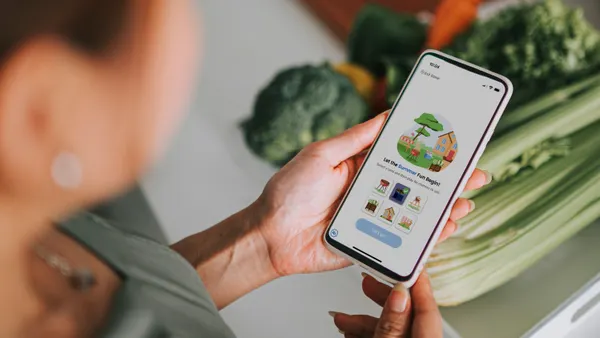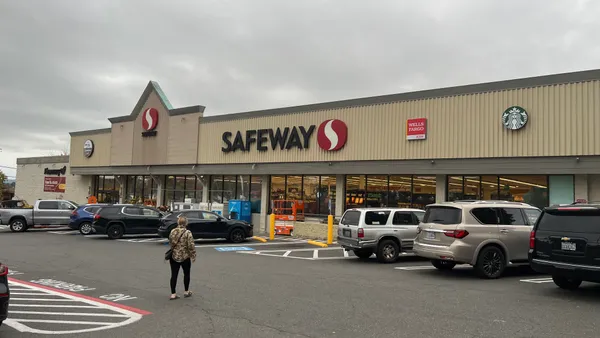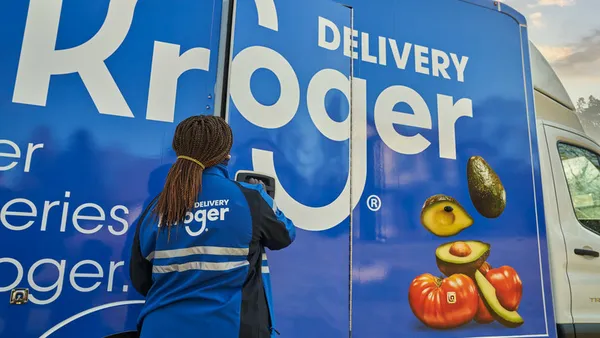Amazon's history in grocery goes back more than a decade, but up until this year, the company's strategy was unclear. After slowly expanding its online options, the e-commerce giant acquired Whole Foods in 2017 but struggled to improve the specialty grocer's sales and didn't seem interested in doing much beyond offering Prime discounts.
Then in February, Amazon threw open the doors on its first cashierless grocery store, Go Grocery, followed soon after by the first few locations of its homegrown supermarket, Amazon Fresh, which combines a full assortment and signature technology, like the Dash Cart. And now it's clear: Amazon is building an ecosystem to thoroughly disrupt the grocery industry.
The foundation of Amazon’s grocery business is based on the “overwhelming” customer response to the free, two-hour delivery offered by Prime Now, which launched in 2015, Jeff Helbling, vice president of Amazon Fresh, said in an email.
Amazon's multi-format approach to grocery isn't unique. But the difference is the layer of proprietary technology the company has added to its brick-and-mortar experience combined with its legacy strength in e-commerce.
What really makes Amazon a disruptor, though, is its ability to create a “connected home” that produces an ecosystem around each shopper, Anne Mezzenga, co-CEO of retail blog Omni Talk, said. “I think they have so much information about who we are and how we shop and can anticipate the needs of their customers before we even know what those needs are,” Mezzenga said.
Along with the new store formats, Amazon has rolled out technology to streamline the shopping experience, like its palm-reading payment tools and an in-garage delivery pilot. “As with all things at Amazon, we innovate on behalf of our customers across all of our businesses, and that includes the grocery space,” Helbling said.
The Go Grocery stores utilize the company’s Just Walk Out technology, which uses computer-vision cameras, shelf sensors and machine-learning algorithms to figure out what shoppers are buying. The Fresh stores offer Alexa features, along with the Dash Carts for cashierless shopping.
Amazon benefits from having its technology at the center of its ecosystem, coupled with its future-minded planning, Rachel Dalton, who heads up e-commerce and omnichannel insights at Kantar, said.
“Amazon has a huge competitive advantage right now when it comes to advanced technologies that can help fuel the growth of online grocery and fulfillment just overall,” Dalton said. “I think that's where other grocers are going to have to do more to catch up.”
Meanwhile, Whole Foods opened more than a dozen stores this year and expanded pickup to all of its U.S. locations. As the pandemic impacted in-store traffic, it converted several locations to dark stores. In addition, delivery through Whole Foods or Amazon Fresh is currently available in more than 2,000 cities.
Helbling said that Amazon’s three grocery properties are unique: natural and organic groceries at Whole Foods; low prices and seamless in-store and online shopping at Amazon Fresh; and the Just Walk Out technology and mix of local, national, organic and conventional offerings at Go Grocery.
Timeline of Amazon's moves in the grocery space in 2020
-
February
First Go Grocery store debuts
-
March
Amazon begins selling its cashierless tech to retailers
-
September
Whole Foods opens first dark store
First Amazon Fresh store opens to the public
Contractors now picking and delivering online Whole Foods orders
Launches palm-reading tool
-
October
Pickup expands to all U.S. Whole Foods stores
-
November
Third and fourth Amazon Fresh stores open
Key In-Garage Grocery Delivery services rolling out to five cities
While Dalton said Amazon hasn’t yet become a go-to grocer like Kroger or Walmart, the e-commerce giant is making waves as it looks to become a leader in the grocery space: “All grocers have their eyes on Amazon right now and what Amazon is doing.”
While it's made significant strides in the grocery industry, Amazon has also faced a variety of challenges this year. When the pandemic caused panic buying and out-of-stocks, Amazon had trouble filling orders and temporarily closed Prime Pantry. In September, reports detailed Whole Foods employees complaining that Amazon Prime shoppers were overrunning the stores. In the summer, Walmart unveiled its Walmart+ membership in a bid to compete with Amazon Prime.
Looking ahead, Helbling said Amazon will continue to expand its omnichannel footprint. The retail giant is still playing catchup when it comes to having stores within a competitive distance to grocers and mass retailers like Walmart and Kroger — a key component to omnichannel strategy, Dalton said. Compared to Walmart’s more than 5,300 U.S. retail units and Kroger’s nearly 3,000 stores, Amazon currently has just under 500 grocery stores in the U.S. But expansion plans are in the works for Amazon. According to research from R5 Capital, Amazon is tracking toward having more than 2,000 locations between Whole Foods and Amazon Fresh, with Fresh constituting the majority of those locations.
With retail vacancies exacerbated by the coronavirus pandemic and Amazon’s net income of more than $5 million reported in the second quarter, the company has the resources to open more physical stores. “If Amazon wants to scale, I don’t think it’s going to take them very long to do that… Time is really the only thing they are going up against,” Mezzenga said.




 Read more
Read more







